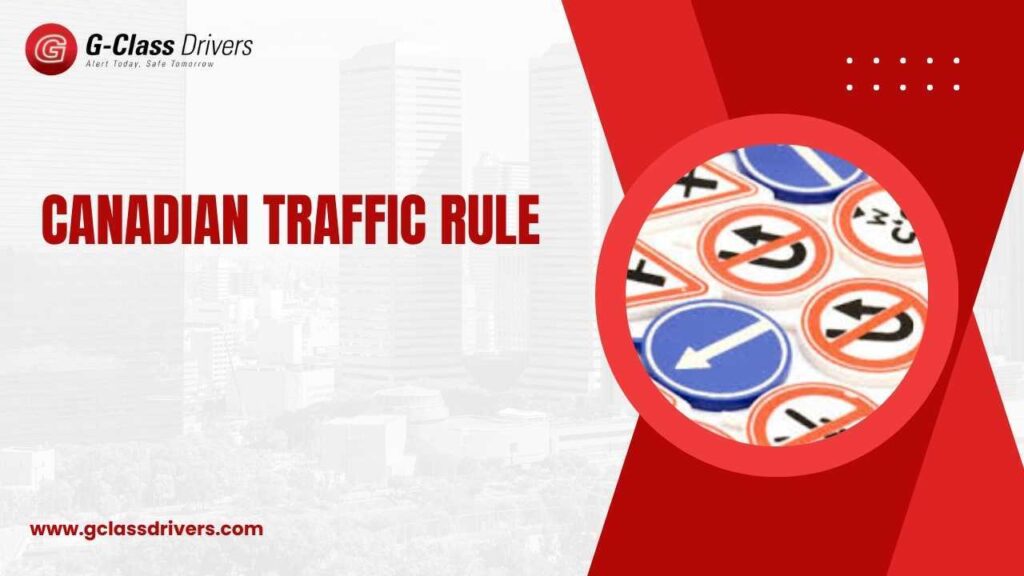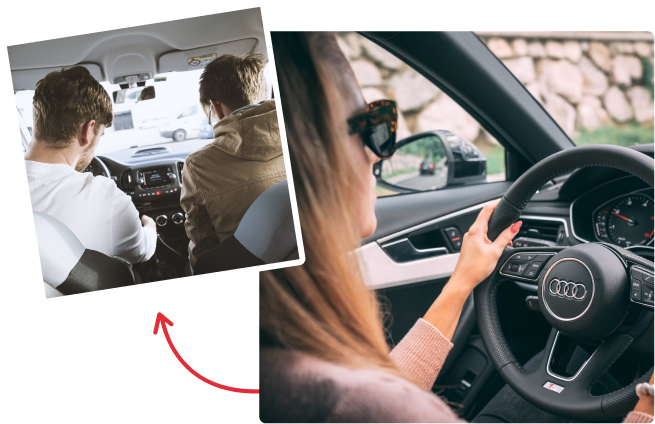Having a vehicle means that you have the freedom to move anywhere you want. You may know how to drive a car, but that doesn’t mean you can avoid Canadian Driving rules and regulations. Driving on Canadian roads means following certain restrictions set by the Canadian government.
It doesn’t matter whether you are an expert or a beginner; the first thing you need to know is the basic Canadian traffic rules. If you want to have a hassle-free drive experience in Canada, then keep reading, everyone!
Traffic Rules in Canada
For driving in Canada, there are certain road signs and rules of the road that everyone must know. Some of the driving rules are explained below:
General Canadian Driving Rules
Here are some common driving guidelines to remember when driving in Canada, but they may differ slightly by province:
- The legal driving age varies by province, however, it is normally 17 years old However, in Montreal, right turns on red are strictly prohibited.
- Seatbelts are required for all passengers.
- If you want to drive legally in Canada, then you need to have a valid driving license.
- Drive on the right side of the road.
- Some provinces feature HOV lanes (High Occupancy Vehicle lanes), which can only be utilized by vehicles carrying at least two people, including the driver.
- Drunk driving is a serious offense; never drive while under the influence of alcohol.
- If you’re behind a school bus with its stop sign extended, you must come to a halt and wait for the children to safely board or disembark.
- Always yield to pedestrians and allow them to cross the street safely.
- Child safety seats are essential for children under the age of nine.
- Using a cell phone while driving is illegal unless you use a hands-free device.
- Speed restrictions are typically 50 km/h in cities and 80-100 km/h on highways.
- When you observe a stop sign, pull to a complete stop on the white line.
If you frequently drive for work, use Zeo Route Planner to optimize your routes!
Rules for Visitors Driving in Winter in Canada
Canada’s weather changes dramatically, with avalanches, black ice, snow, and dangerous temperatures. Choosing the correct time to visit Canada is critical, but those who are unfamiliar with winter driving may find it difficult.
- If driving in the mountains, make sure you have winter tires and chain them up. (Do NOT drive with all-season tires; double-check this with your rental).
- Rent a vehicle with all-wheel drive.
- Check the road conditions before heading out (many provinces have their site for this; simply google “road conditions in XX province”).
- Keep your phone fully charged at all times.
- Know the numbers for emergency services and towing trucks.
- Check the weather before going out to avoid getting trapped in adverse situations.
- Drive cautiously and watch out for other drivers (and black ice).
- Stay flexible with your itinerary the weather might be unpredictable.
- Dress correctly with a decent parka, toque (beanie), gloves, and winter boots.
Traffic Lights
Canada’s traffic lights function similarly to global ones, with green indicating go, yellow indicating red light readiness, and red indicating stop. However, specific locations have unique flashing green lights, such as Ontario indicating different things than British Columbia, and a flashing red light serving as a stop sign.
Car Insurance Rules in Canada
Canada requires all drivers to have insurance, with different minimum liability requirements depending on the province or territory.
- If you have US auto insurance and are entering Canada on a tourist visa, your current policy likely covers you.
- If you don’t have insurance or want more coverage, you can hire a car from Discover Cars Canada.
- Purchasing travel insurance that includes driving in Canada is also an option.
Candian Driving Rules for Visitors
Canada’s driving rules vary regionally and are strictly enforced in provinces where traffic laws apply. Essential driving regulations for visitors in Canada include:
- They must completely stop at all red lights and stop signs (failure to do so may result in a ticket).
- The right of way is always given to pedestrians.
- Photo radar detectors are commonly employed to monitor and enforce speed limits.
- Canadians pass on the left and drive on the right side of the street.
- Cell phone use while driving is illegal (unless hands-free).
- Often, driving is restricted on private property.
- The statutory speed limit is often 50 km/h in cities and 80 km/h in rural areas, though this varies by province and road (Source).
- A seatbelt is required for safety.
- If a driver notices a stopped school bus, he or she must stop (or proceed slowly).
- Although it is illegal to drive while drunk, each province has its own alcohol rules.
- Unless a sign indicates otherwise, red lights usually allow right-hand turns.
Conclusion
To conclude, driving in Canada has a set of essential rules that everyone has to follow. By understanding Canadian traffic rules, you can become a responsible and confident driver. Following these rules can help you avoid fines and can save you from issues. Some of the main Canadian traffic rules have been explained in this article.
First one is to have a valid driver’s license if you want to legally drive in Canada. Wearing a seat belt is another driving law that needs to be strictly followed. Regarding the speed limit, there are also certain conditions that need to be met.
Moreover, recognizing the significance of different traffic signals, avoiding handheld devices while driving, and respecting the rules around 4-way stops are crucial for responsible driving. Aside from this, if you need further help, GClass Drivers are here to help you. Our experienced instructors will guide you in every step so that you can become safe drivers.
FAQs
Are Canada’s driving rules the same as the US?
No, while many rules are similar, there are differences like speed limits in kilometers and right turns on red not being allowed in some places like Montreal.
Can I drive in Canada with a US driver’s license?
Yes, a valid US driver’s license is accepted in Canada for short visits.
What is the rule of the road in Canada?
In Canada, you drive on the right side of the road.
What do tourists need to drive in Canada?
Tourists need a valid driver’s license from their home country. An International Driver’s Permit may be required if the license is not in English or French.
Can I drive in Canada as a visitor?
Yes, visitors can drive in Canada with a valid driver’s license from their home country.
What are the requirements to drive across the Canadian border?
You’ll need a valid passport, vehicle registration, and proof of insurance. Some travelers may need an eTA or visa.
Do I need anything to drive my car into Canada?
Yes, you need your driver’s license, vehicle registration, and proof of insurance to drive your car into Canada.





